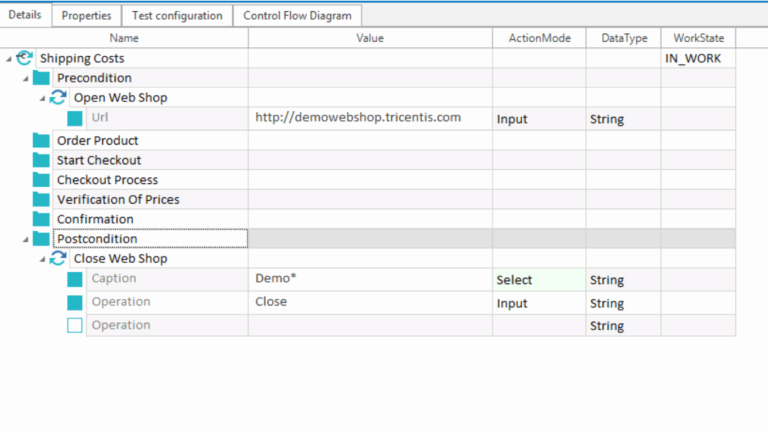Iterators in Python programming language are widely used everywhere. They are implemented within the loops, comprehension, generators but are hidden in normal sight. This Iterator in python is simply an object which will return the data one element at a time. Here the python iterator object must be implemented to special methods,_iter_() and _next_(), it is called as iterator protocol. An object is called iterable which is called an iterator form. There are many built-in containers in python like, list, tuple, string are iterables. Here the iter() function is going to return on iterator from them.
Iterable will be considered as an object which can be iterated. It always generates an iterator when it is passed to the iter()method. Lists, tuples, strings, dictionaries, and sets are all iterable objects. They are iterable containers that we may pass us to convert into an iterator. See to it that iterator will also be iterable but it is not an iterator. An iterator that will be created from the iterable by making use of the function iter(). When we pass this tuple to an iter() function we will get an iterator. This will be possible by the class object which has method _iter_() which will return an iterator.
The method _iter_() method will return the iterator object itself. This needs to allow both containers and iterators to be used with for and in the statements.This method corresponds to the tp_iter slot of the type structure for the python object in the python/C API.
_next_() method will return the next item from the container. If we have no further items, raise the stop iteration exception. This method corresponds to the tp_iternext slot of the type structure for the python objects in the python/C API.
Iterating through an iterator:
We mainly use the next() function where the manually iteration through all the items of an iterator. When we reach the end and there will be no more data returned it will be raise the stopiteration Exception the example is
#define a list
my_list=[4,7,0,3]
#get an iterator using iter()
my_iter=iter(my_list)
#iterate through it using next()
#output: 4
print(next(my_iter))
#next(objj) is same as objj._next_()
#output:0
print(my_iter._next_())
#output:3
print(my_iter._next_())
#this will give an error,no items left
next(my_iter)
The output
4
7
0
3
Traceback(most current call left):
File”<string>”,line 24, in<module>
next(my_iter)
stopiteration
Iterating an iterator using the loops:
When we are using the next() function repeatedly why shouldn’t we use the while loop and make the work easier, we also will use the exception handling for the error that we get when the iterator has no elements left. So whenever the “stopiteration” occurs the control will go except the block and break statement will be executed.
# define an iterable such as a list
list1=[0,1,2,3,4,5,6,7,8,9,]
# get an iterator using iter()
iter1=iter(list1)
# infinite loop
while True:
try:
# get the next item
print(next(iter1))
# do something with element
except StopIteration:
# if StopIteration is raised, break from loop
break
Output:
0
1
2
3
4
5
6
7
8
9
Iterables
An iterable is considered a python object that has the capability of getting back its members one at a time by allowing it to be iterated over in a for loop. There are similar examples that include lists, tuples, and also strings that will be in a sequence that is iterated over in a for loop. We will always encounter the important non-sequential collections, like dictionaries and sets where these iterables as well. It will be possible to have an iterable that generates each one which of its members in any memory at once.
The Functions of Iterables:
We have some built-in functions which will accept iterables as an argument like list, tuple, dict, set that will construct a list tuple dictionary or maybe set respectively from the contents of an iterable.
Sum: Which adds the data of an iterable.
Sorted: Which returns back the list of the sorted data of an iterable.
Questions
- Explain the python iterators with an example?
- What are Iterables give an example?





























12 Responses
objects in the python/C API.
Iterating through an iterator:
We mainly use the next() function where the manually iteration through all the items of an iterator. When we reach the end and there will be no more data returned it will be raise the stopiteration Exception the example is
#define a list
my_list=[4,7,0,3]
#get an iterator using iter()
my_iter=iter(my_list)
#iterate through it using next()
#output: 4
print(next(my_iter))
#next(objj) is same as objj._next_()
#output:0
print(my_iter._next_())
#output:3
print(my_iter._next_())
#this will give an error,no items left
next(my_iter)
The output
4
7
0
3
Traceback(most current call left):
File””,line 24, in
next(my_iter)
stopiteration
An iterable is considered a python object that has the capability of getting back its members one at a time by allowing it to be iterated over in a for loop. There are similar examples that include lists, tuples, and also strings that will be in a sequence that is iterated over in a for loop. We will always encounter the important non-sequential collections, like dictionaries and sets where these iterables as well. It will be possible to have an iterable that generates each one which of its members in any memory at once.
The Functions of Iterables:
We have some built-in functions which will accept iterables as an argument like list, tuple, dict, set that will construct a list tuple dictionary or maybe set respectively from the contents of an iterable.
Sum: Which adds the data of an iterable.
Sorted: Which returns back the list of the sorted data of an iterable.
1) Explain the python iterators with an example?
Python iterator is an object representing a stream of data that produces a data value at a time using the __next__() method.
Iteration is the process of repeating steps. For Example
#define a list
my_list=[4,7,0,3]
#get an iterator using iter()
my_iter=iter(my_list)
#iterate through it using next()
#output: 4
print(next(my_iter))
#next(objj) is same as objj._next_()
#output:0
print(my_iter._next_())
#output:3
print(my_iter._next_())
#this will give an error,no items left
next(my_iter)
The output
4
7
0
3
Traceback(most current call left):
File””,line 24, in
next(my_iter)
stopiteration
2) What are Iterables give an example?
Iterable is an object, that one can iterate over.
* Lists, tuples, dictionaries, and sets are all iterable objects. They are iterable containers which you can get an iterator
from.
* Non-sequential collections, like dictionaries and sets; these are iterables as well.
A.Python iterators.
Iterators in Python programming language are widely used everywhere. They are implemented within the loops, comprehension, generators but are hidden in normal sight. This Iterator in python is simply an object which will return the data one element at a time. Here the python iterator object must be implemented to special methods,_iter_() and _next_(), it is called as iterator protocol. An object is called iterable which is called an iterator form. There are many built-in containers in python like, list, tuple, string are iterables. Here the iter() function is going to return on iterator from them.
Example-We mainly use the next() function where the manually iteration through all the items of an iterator. When we reach the end and there will be no more data returned it will be raise the stopiteration Exception the example is#define a list
my_list=[4,7,0,3]
#get an iterator using iter()
my_iter=iter(my_list)
#iterate through it using next()
#output: 4
print(next(my_iter))
#next(objj) is same as objj._next_()
#output:0
print(my_iter._next_())
#output:3
print(my_iter._next_())
#this will give an error,no items left
next(my_iter)
The output
4
7
0
3
Traceback(most current call left):
File””,line 24, in
next(my_iter)
stopiteration
B.An iterable is considered a python object that has the capability of getting back its members one at a time by allowing it to be iterated over in a for loop. There are similar examples that include lists, tuples, and also strings that will be in a sequence that is iterated over in a for loop. We will always encounter the important non-sequential collections, like dictionaries and sets where these iterables as well. It will be possible to have an iterable that generates each one which of its members in any memory at once.
1.Explain the python iterators with an example?
Iterator in Python is an object that is used to iterate over iterable objects like lists, tuples, dicts, and sets. The iterator
object is initialized using the iter() method. It uses the next() method for iteration.
__iter__(): The iter() method is called for the initialization of an iterator. This returns an iterator object
__next__(): The next method returns the next value for the iterable. When we use a for loop to traverse any iterable object,
internally it uses the iter() method to get an iterator object, which further uses the next() method to iterate over. This
method raises a StopIteration to signal the end of the iteration.
Example:
my_list=[4,7,0,3]
my_iter=iter(my_list)
print(next(my_iter))
print(my_iter._next_())
print(my_iter._next_())
next(my_iter)
The output
4
7
0
3
2.What are Iterables give an example?
An iterable is considered a python object that has the capability of getting back its members one at a time by allowing
it to be iterated over in a for loop.There are similar examples that include lists, tuples, and also strings that will be in a sequence that is iterated over in a for loop
example : List in python
A list is the most common iterable and most similar to arrays in C. It can store any type of value. A list is a mutable object. The values in the list are comma-separated and are defined under square brackets []. We can initialize a list using the square brackets or using the list() function.
li = [1, 2, 3, “Python”] #initializing a list with multiple values
print(li)
output : [1, 2, 3, “Python”]
A.Iterators in Python programming language are widely used everywhere. They are implemented within the loops, comprehension, generators but are hidden in normal sight. This Iterator in python is simply an object which will return the data one element at a time. Here the python iterator object must be implemented to special methods,_iter_() and _next_(), it is called as iterator protocol. An object is called iterable which is called an iterator form. There are many built-in containers in python like, list, tuple, string are iterables. Here the iter() function is going to return on iterator from them.
Example-#define a list
my_list=[4,7,0,3]
#get an iterator using iter()
my_iter=iter(my_list)
#iterate through it using next()
#output: 4
print(next(my_iter))
#next(objj) is same as objj._next_()
#output:0
print(my_iter._next_())
#output:3
print(my_iter._next_())
#this will give an error,no items left
next(my_iter)
The output
4
7
0
3
Traceback(most current call left):
File””,line 24, in
next(my_iter)
stopiteration
BAn iterable is considered a python object that has the capability of getting back its members one at a time by allowing it to be iterated over in a for loop. There are similar examples that include lists, tuples, and also strings that will be in a sequence that is iterated over in a for loop..
Iterables in Python:
Explain the python iterators with an example?
Iterator in python programming language is an object which will return the data one element at a time. These hidden iterators help to implement within the loops, comprehension and generators.
Iterator Protocol : _iter_() and _next_()
Example: Iterables: y = [5,7,9,11]
iter()
Iterator:
next()
y=5, y=7, y=9, y=11
What are iterables? give an example
A python object, iterables, has the capability of returning its members one at a time by allowing it to be iterated over in a for loop. Lists, tuples, strings are some similar examples. Non-sequential collections like dictionaries and sets will also be encountered as iterables.
1. Explain the python iterators with an example?
This Iterator in python is simply an object which will return the data one element at a time. Iterator in Python is an object that is used to iterate over iterable objects like lists, tuples, dicts, and sets. The iterator object is initialized using the iter() method. It uses the next() method for iteration.
2.What are Iterables give an example?
Iterables are containers that can store multiple values and are capable of returning them one by one. Iterables can store any number of values. example: lists ,tuple and set.
iterators in Python programming language are widely used everywhere. They are implemented within the loops, comprehension, generators but are hidden in normal sight. This Iterator in python is simply an object which will return the data one element at a time. Here the python iterator object must be implemented to special methods,_iter_() and _next_(), it is called as iterator protocol. An object is called iterable which is called an iterator form. There are many built-in containers in python like, list, tuple, string are iterables. Here the iter() function is going to return on iterator from them.
An iterable is considered a python object that has the capability of getting back its members one at a time by allowing it to be iterated over in a for loop. There are similar examples that include lists, tuples, and also strings that will be in a sequence that is iterated over in a for loop. We will always encounter the important non-sequential collections, like dictionaries and sets where these iterables as well. It will be possible to have an iterable that generates each one which of its members in any memory at once.
1. Explain the python iterators with an example?
Iterators in Python programming language are widely used everywhere. They are implemented within the loops, comprehension, generators but are hidden in normal sight. This Iterator in python is simply an object which will return the data one element at a time.
For example:
#define a list
my_list=[4,7,0,3]
#get an iterator using iter()
my_iter=iter(my_list)
#iterate through it using next()
#output: 4
print(next(my_iter))
#next(objj) is same as objj._next_()
#output:0
print(my_iter._next_())
#output:3
print(my_iter._next_())
#this will give an error,no items left
next(my_iter)
The output
4
7
0
3
Traceback(most current call left):
File””,line 24, in
next(my_iter)
stopiteration
2. What are Iterables give an example?
An iterable is considered a python object that has the capability of getting back its members one at a time by allowing it to be iterated over in a for loop. There are similar examples that include lists, tuples, and also strings that will be in a sequence that is iterated over in a for loop.
1. Explain the python iterators with an example?
An iterator is an object that contains a countable number of values.
An iterator is an object that can be iterated upon, meaning that you can traverse through all the values.
Technically, in Python, an iterator is an object which implements the iterator protocol, which consist of the methods __iter__() and __next__().
For Example:
# define a list
my_list = [4, 7, 0]
# create an iterator from the list
iterator = iter(my_list)
# get the first element of the iterator
print(next(iterator)) # prints 4
# get the second element of the iterator
print(next(iterator)) # prints 7
# get the third element of the iterator
print(next(iterator)) # prints 0
2. What are Iterables give an example?
An iterable is any Python object capable of returning its members one at a time, permitting it to be iterated over in a for-loop. Familiar examples of iterables include lists, tuples, and strings – any such sequence can be iterated over in a for-loop.
Examples of iterables include lists, tuples, and strings – any such sequence can be iterated over in a for-loop.
1. Iterators in python are implemented within loops, comprehensions, generators but are hidden in normal sight. It is an object that returns the data one element at a time. The python iterator object must be implemented to special methods, _iter_() and _next_(), it is called as iterator protocol. Example
# define an iterable such as a list
list1=[0,1,2,3,4,5,6,7,8,9,]
# get an iterator using iter()
iter1=iter(list1)
# infinite loop
while True:
try:
# get the next item
print(next(iter1))
# do something with element
except StopIteration:
# if StopIteration is raised, break from loop
Break
2. Iterables are python objects that has the capacity of getting back its members one at a time by allowing it to be iterated over in a for loop. Lists, tuples, and strings can be used in a sequence that is iterated over in a for loop. Some functions of iterables are sum and sorted.
1) 1. Explain the python iterators with an example?
#define a list
my_list=[4,7,0,3]
#get an iterator using iter()
my_iter=iter(my_list)
#iterate through it using next()
#output: 4
print(next(my_iter))
#next(objj) is same as objj._next_()
#output:0
print(my_iter._next_())
#output:3
print(my_iter._next_())
#this will give an error,no items left
next(my_iter)
The output
4
7
0
3
Traceback(most current call left):
File””,line 24, in
next(my_iter)
stopiteration
2) 2. What are Iterables give an example?
A) Iterables are objects in Python that can be iterated upon. This means that you can loop over the elements of an iterable one at a time.
Examples of iterables include lists, tuples, and strings – any such sequence can be iterated over in a for-loop.